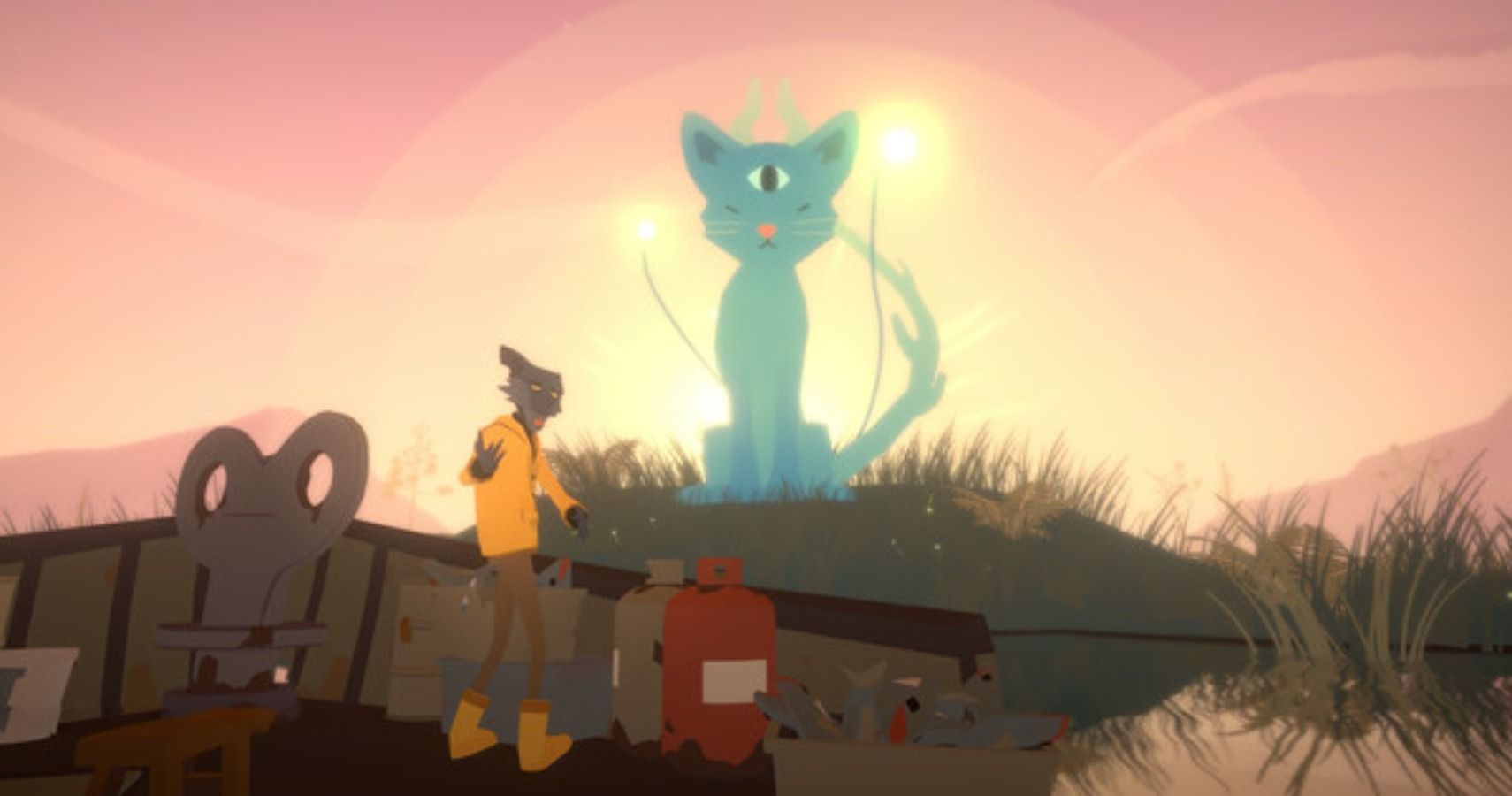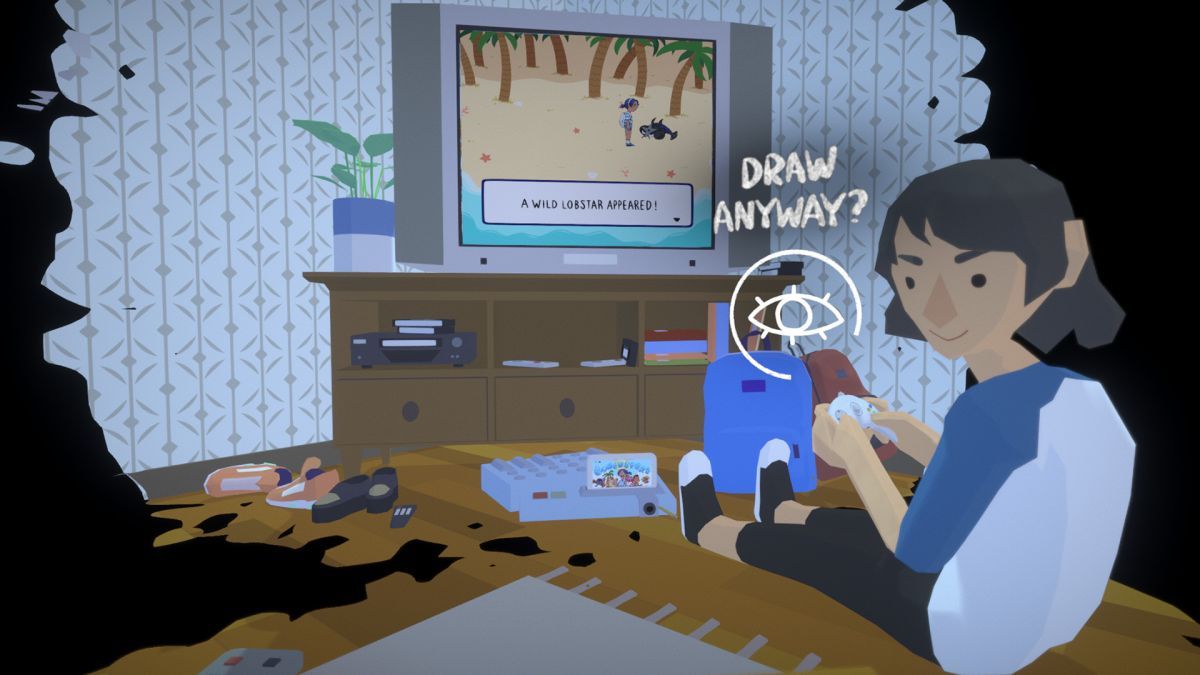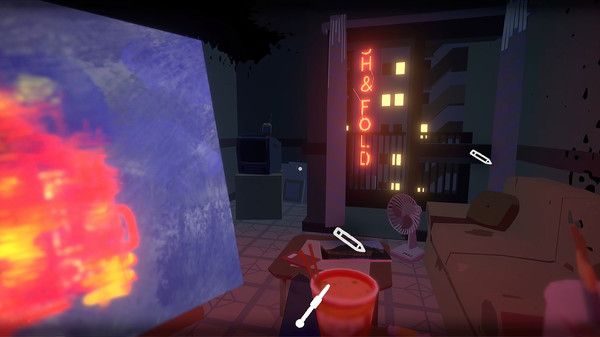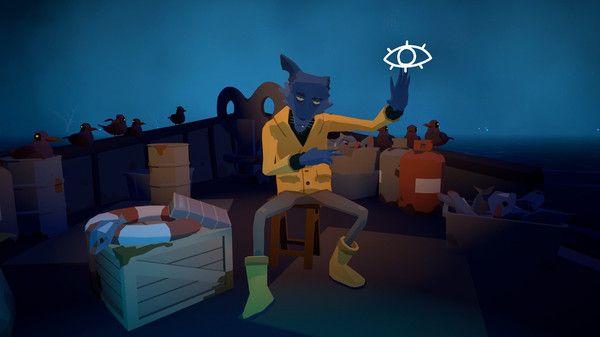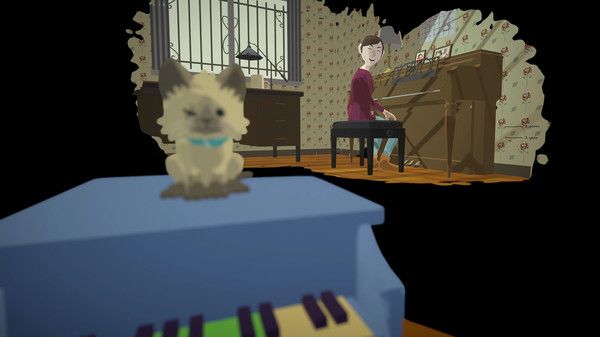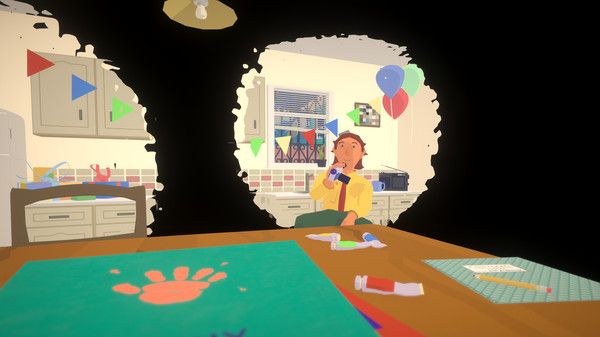Before Your Eyes is an experience unlike any other. As opposed to clicking your way through each scene as you might do in a more conventional game, progression is almost entirely mapped to blinking.
After playing through Before Your Eyes, I got the chance to sit down with game director Oliver Lewin and lead programmer Bela Messex in order to discuss how the team invented, iterated on, and ultimately implemented the functions necessary for creating such a unique experience in the first place.
Lewin explains that the premise of Before Your Eyes has its origins in a college project from way back in 2014. While developing the core idea of the game, the team started to wonder why webcams - despite their ubiquity - weren’t being explored as an input for interaction. It didn’t take long for them to make the connection to blinking, an inevitable player input that has inherent links to timing while simultaneously operating as a springboard for gameplay and a metaphorical and thematic driver for narrative.
“It's very different,” Messex explains. “There's literacy with game controllers and most people know how to use a keyboard - these are standard devices. Everybody has a different webcam. There's lots of different lighting conditions, lots of different faces, lots of different skin tones, people wear glasses. All of those things are variables that make blinking unreliable.
“On top of that, you have to train people that their blinks matter, which is not something that people usually go into a game thinking about. If you're doing it with your hands, maybe at a certain point it becomes subconscious, but you're very intentionally moving your thumbs and pressing these buttons. With your eyes, it's a bodily function - it’s like controlling a game with breathing.”
The most core design question GoodbyeWorldGames had to answer when developing Before Your Eyes was the caveat that arose from this immense variability - how can you make blinking enjoyable, as opposed to “a completely annoying thing that’s just a neat student game idea.”
There’s no easy answer to that question. Messex joined the team two years ago to tackle Before Your Eyes’ programming and design. At this point it had already won a handful of awards, but the blink was different in that it was instant - you could essentially speedrun the game just by keeping your eyes closed. Messex went on to add a metronome to the bottom of the screen, affording you more control and allowing you to rest your eyes between progression prompts, while interactable environmental objects provided room to refresh your eyes before moving on. You can actually stay in scenes for a long time if you time your blinks correctly - as Messex says, “I guess that would be like min/maxing our game.”
Lewin builds on this, explaining that there’s a delicate balance here. While it’s important to give people the ability to control their blinks to at least some extent, the frustration of missing a scene because you blinked prematurely is part of the experience.
“You hear from testers, ‘Oh, I love the game, but it was just super frustrating, and I kept on blinking out of scenes and I wanted to hear more,'” he explains. “And we'd be like, well, that's the whole point - acceptance and the inevitability of time moving forward. At a certain point, you realize there's a way to get this across while not being as frustrating, so it's trying to dial that frustration meter [down].”
This obviously wasn’t the only issue with a game as ambitious as Before Your Eyes. Even after balancing the blink to suit myriad variables, it still needed to matter - it needed to be more than a click. This was one of the team’s biggest fears, and so they consciously ensured that each and every blink was thoughtfully considered in relation to both the overarching story and ongoing rhythm of the game. After all, the theme of Before Your Eyes is “if you blink, you’ll miss,” which is something that literally happens over and over again as you progress through the narrative. Without spoiling anything, this is used to excellent effect in an astonishing number of unexpected ways - you’ll have to play it for yourself to see though, eh?
“When we started working with Skybound they actually said there was too much blinking and we needed to tone it down,” Messex tells me. “So we had to go back and look at how the blink was being used and really use it for these special moments where you're revealing something in the scene.”
“It's a little hard to describe, but something about using your face and focusing on your micro movements has this intimate feeling,” Lewin adds. “It pulls you into the story and makes you a little bit more attentive to things. We knew that it was going to be about these themes of acceptance, loss, and reflection. That's what we liked about the idea of focusing on blinking - it's about missing things.”
This thematic basis - feelings and processes like acceptance, loss, and reflection - was informed by the team’s own personal experiences. For example, Lewin took photographs of every corner of his childhood home, while visual signifiers of growing up in California like agave and coyotes regularly appear throughout the game. Interestingly, these ideas are also compounded with mythology, although I won’t get too much into that here - again, you’ll need to play it to find out.
In terms of the overarching narrative all of this contributes to, there are also some structural nuances that add even more complexity to the game’s unique emphasis on blinking - particularly in terms of how voice acting was implemented where it might not always be heard in full.
“The voice actors pre-COVID were in the same room together when they were recording, so you have this really nice banter,” Messex tells me. “That's actually another major design question - if these scenes weren't interesting then blinking out of them wouldn't matter. You would just blink as soon as you could because in most games you want to move ahead as quickly as possible. Some games want you to wander around, but in a lot of games you get penalized and you go backwards to your checkpoint. In this game, you get penalized and go forward.”
This naturally required the team to continuously iterate on scenes in order to make sure they were as good as they could possibly be. I actually asked about a line I’d heard, which was probably my favourite one in the whole game, and both Lewin and Messex were surprised I’d caught it due to how obscure it was. Similarly, I missed a bunch of lines that I’m sure the vast majority of other people would catch effortlessly.
“There are some lines in the game that very few people are going to catch and they were designed that way,” Lewin explains. “I personally find that exciting - you can't catch everything. I feel like that's lifelike. And I think there's probably some things in there that you literally cannot catch. I don't know why, maybe that's weird of us to put that stuff in there, but there's a lot of good stuff that if you can stay in these scenes you'll hear, and if you don't, maybe that's a reason to play it again.”
“There's a world where this game could be much longer,” Messex adds. “But you wouldn't have each of those [125] scenes being so special because they required so much TLC to get to that point.
“I really had to bend the way I was thinking to work with these moments and make sure that the story was speaking and the player didn't feel frustrated. I had to throw so much stuff out the window to accommodate those little moments and make them work. That was frustrating at first, but ended up being really fascinating.”
One of the concepts that didn’t get thrown out was the piano, a recurring motif throughout the game that informs a significant amount of its most tender and intense moments. Lewin, the game director, also served as co-composer on Before Your Eyes with Dillon Terry. He explains that although there were a lot of ideas floated for minigames, the piano rose to the top because of how credibly it could be implemented thanks to the external expertise of individual team members.
“It's literally the bridge between Benny and his mom,” Messex adds. “When you're playing the game, you literally play Elle’s pieces on the piano. Sometimes she's proud of us, sometimes she's not. I have a power mom, and I think [creative director] Graham [Parkes] has a power mom. Elle is actually my favourite character because I can relate to the pressure she gave, this sort of loving pressure that was maybe overbearing at times but came from a good place. And the piano is how you interact with that pressure and express it because you can't talk.”
The piano also served as a great way of acknowledging the passing of time, going from a little toy piano at the beginning of the game to playing Bach half an hour - or ten years - later. As Lewin says, “the years pass nicely through a piano.”
Speaking of Elle, who is your mother in the game and a composer herself, Lewin and Terry wrote songs that are, in terms of the story, supposed to have been written by her. It’s one thing to write music for a game, but another thing entirely to compose a song that’s ostensibly been composed by a fictional person.
“There's a vague sense of a time period in the game,” Lewin explains. “It's not a super prescriptive one, but it's there. And I so I wanted to - okay, what would a woman in her age range, what type of music might she be composing? What influences might she feel if she was in Southern California during that time period? You also want to think about how you're adding to the character development in the palette of flavours that’s there for the character. Like Bela mentioned, she's this kind of power mom. She's a very powerful figure and some of her flaws come through in that.
“I saw the music as an opportunity to highlight a different side of her, maybe a side of her that came more from her own youth. That's something I really tried to take on board in crafting the music that she herself writes. Also, if it's going to be a motif that gets repeated and turns into a theme in the score itself, it has to be something that doesn't just get super annoying to hear over and over again.”
It’s fascinating to consider all of the above, from the complex development of functional eye detection tech to the way in which music informs transience, although I also thought it was important to ask about the implications a game based on blinking might have in terms of accessibility.
“I think it's transferable, but there are definitely weird things about blinking,” Messex explains. “For example, you’re still using a mouse in this game, it's not totally hands free. We did a VR version a year ago for South by Southwest and South by Southwest got cancelled, so we didn't show it. But that was totally hands free, so for VR, I think there's huge implications for it - especially with the Vive Pro Eye, which actually has eye tracking.”
“Pupil tracking is something we've experimented with,” Lewin adds. “I think before we go further with an enhanced accessibility version of this game, we want to have that discussion and really involve the people that should lead it. We're in the process of starting communication with various organizations that lead on that front, and various people who are disabled and lead on that front as well. We're definitely looking into ways to expand the accessibility of this game, but to do it right.”
“There's so many different ways that interaction can happen,” Messex explains. “I would say your hands and your eyes are probably the most important thing for playing most video games, and I don't think it actually has to be that way - I think tapping into something like a webcam is great. We didn't plan on this, but because of the pandemic, lots more people are familiar with webcams and have them and use them. There's more literacy with this device. I think tapping into webcams - something that can visualize your body - is a step in that direction, and we'll see what else becomes available.”
Messex tells me that all of this comes from truly learning about this technology and how it can be used to progress storytelling. As he explains, the team were learning for about 90 percent of the dev time on Before Your Eyes, while the remaining ten percent was dedicated to fine tuning the final game.
That being said, they’re comfortable with the idea of going into that unfamiliar learning phase - or, as Messex puts it, “squishy zone” - all over again. Experimenting with controllers and inputs to break the fourth and fifth walls is something that GoodbyeWorld Games has fostered a keen interest in after finishing Before Your Eyes, and the studio intends to keep on experimenting with cutting edge technologies in order to challenge conventional modes of storytelling.
“What if you made a game where you can ask people to close their eyes, but the eye closing doesn't even matter as much?” Messex asks. “I think since we learned so much about eye detection, that would be silly. But I think it would be interesting to work on something in the future where you ask the player to take a journey and do weird things outside of the game, and see how far you can take that. That's a squishy zone I'd like to learn about next.”
“We’re all brimming with ideas,” Lewin continues. “In terms of Before Your Eyes, I think there's also excitement about expanding that and seeing how people respond to it. That could definitely inform our decision making in terms of other versions of Before Your Eyes and continuing to work on it. I think the webcam stuff and eye detection feels like it's sitting with Before Your Eyes - maybe for the next thing we could look into something else that's equally innovative as a new way of doing storytelling and gameplay. But I think that leaving the eye detection stuff with Before Your Eyes would be our knee jerk reaction.”
Before Your Eyes is available now on Steam.

